
The Presbyterian Church (USA), abbreviated PC (USA), is a mainline Protestant denomination in the United States. It is the largest Presbyterian denomination in the country, known for its liberal stance on doctrine and its ordaining of women and members of the LGBT community as elders and ministers. The Presbyterian Church (USA) was established with the 1983 merger of the Presbyterian Church in the United States, whose churches were located in the Southern and border states, with the United Presbyterian Church in the United States of America, whose congregations could be found in every state.

The Cumberland Presbyterian Church is a Presbyterian denomination spawned by the Second Great Awakening. In 2019, it had 65,087 members and 673 congregations, of which 51 were located outside of the United States. The word Cumberland comes from the Cumberland River valley where the church was founded.

Aaron Burr Sr. was a notable Presbyterian minister and college educator in colonial America. He was a founder of the College of New Jersey and the father of Aaron Burr (1756–1836), the third vice president of the United States.

Gilbert Tennent was a Presbyterian revivalist minister in Colonial America. Born into a Scotch-Irish family in County Armagh, Ireland, he migrated to America with his parents, studied theology, and along with Jonathan Edwards and George Whitefield, became one of the leaders of the evangelical revival known as the First Great Awakening. His most famous sermon, On the Danger of an Unconverted Ministry, also known as the "Nottingham Sermon," compared "Old Side" ministers to the biblical Pharisees of the Gospels, triggering a schism in the Presbyterian Church which lasted for 17 years. A prolific writer, Tennent would later work towards reunification of the two synods involved.

The Presbyterian Church in the United States of America (PCUSA) was a Presbyterian denomination existing from 1789 to 1958. In that year, the PCUSA merged with the United Presbyterian Church of North America. The new church was named the United Presbyterian Church in the United States of America. It was a predecessor to the contemporary Presbyterian Church (USA).
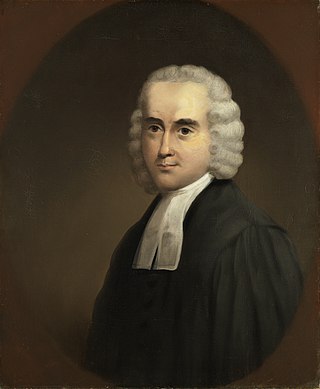
Jonathan Dickinson was a Congregational, later Presbyterian, minister, a leader in the Great Awakening of the 1730s and 1740s, and a co-founder and first president of the College of New Jersey, which later became Princeton University.

The First Presbyterian Church and Cemetery in New Brunswick, New Jersey is one of the oldest churches in the Presbyterian denomination. It was the seat of the Presbytery of New Brunswick which is now located in Trenton, New Jersey.
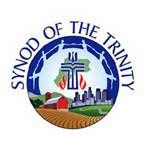
Synod of the Trinity is an upper judicatory of the Presbyterian Church headquartered in Camp Hill, Pennsylvania. The synod oversees sixteen presbyteries covering all of Pennsylvania, most of West Virginia, and a portion of eastern Ohio.
John Thomson or Thompson was born in Ireland and became a minister in the Presbytery of Philadelphia, later the Synod of Philadelphia. He served as a missionary in both Virginia and North Carolina, where he died a natural death in 1753. He is buried in the cemetery of Centre Presbyterian Church in Mooresville, North Carolina.
The Old Side–New Side controversy occurred within the Presbyterian Church in Colonial America and was part of the wider theological controversy surrounding the First Great Awakening. The Old and New Side Presbyterians existed as separate churches from 1741 until 1758. The name of Old Side–New Side is usually meant as specifically referring to the Presbyterian Church. When one is referring to the debate as a whole, Old and New Light is usually used.
The former Presbytery of New Brunswick is now part of the Coastlands Presbytery as of March 1, 2021

The following outline is provided as an overview of and topical guide to the U.S. state of New Jersey:

The Reformed Presbyterian Church of North America (RPCNA) is a Presbyterian church with congregations and missions throughout the United States, Canada, Japan, and Chile. Its beliefs—held in common with other members of the Reformed Presbyterian Global Alliance—place it in the conservative wing of the Reformed family of Protestant churches. Below the Bible—which is held as divinely inspired and without error—the church is committed to several "subordinate standards," together considered with its constitution: the Westminster Confession of Faith and Larger and Shorter Catechisms, along with its Testimony, Directory for Church Government, the Book of Discipline, and Directory for Worship.
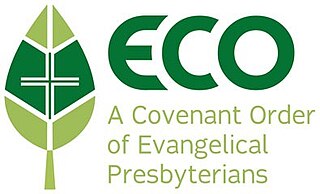
ECO: A Covenant Order of Evangelical Presbyterians is an evangelical Presbyterian denomination in the United States. As a Presbyterian church, ECO adheres to Reformed theology and Presbyterian polity. It was established in 2012 by former congregations and members of the Presbyterian Church (USA), abbreviated PC(USA). Denominational disputes over theology—particularly ordination of practicing homosexuals as pastors and gay marriage—and bureaucracy led to the founding of ECO. In 2018, ECO has over 383 congregations, 103,425 covenant partners and over 500 pastors. ECO churches are egalitarian in beliefs and ordain women as pastors and elders.
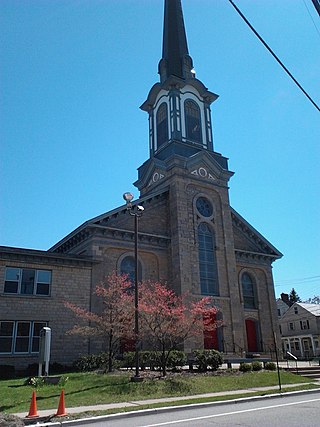
The former Presbytery of Newton is now part of the Presbytery of the Highlands of New Jersey as of March 1, 2021.

The Presbytery of Philadelphia, known during its early years simply as the Presbytery or the General Presbytery, is a presbytery of the Presbyterian Church (U.S.A.). It was the first organized presbytery in what was to become the United States.

Presbyterianism has had a presence in the United States since colonial times and has exerted an important influence over broader American religion and culture.

The Old Scots Burying Ground is a historic cemetery located on Gordon's Corner Road in the Wickatunk section of Marlboro Township, in Monmouth County, New Jersey. It was added to the National Register of Historic Places on August 15, 2001, for its significance in history and religion. The Old Scots Burying Ground is about an acre in size, about 195 feet above sea level and dates back to 1685. The total number of burials at the cemetery is not precisely known, suggested by Symms, "There are a large number of graves in Old Scots yard without any inscribed stones". Some reports place the number as at least 100 known graves with most headstones of brown sandstone. However, more recent research using ground penetrating radar reported by the Old Tennent Church in 2001 has put the number of confirmed sites at about 122 graves with a possible 140 more unmarked; placing the number at about 262 total graves in the cemetery. In 1945, in an attempt to clean out the site of vegetation and over-growth, a bulldozer was used on the property and as a result some headstones were dislodged and broken stones removed. The defining structure in the cemetery is a tall monument to Rev. John Boyd, created by the J&R Lamb Company. Built to commemorate the first recorded Presbyterian ordination of Rev. John Boyd. The monument is currently owned by the Synod of the Northeast who holds the property deed but it is maintained by the Old Tennent Church. The last identified burial was in 1977.
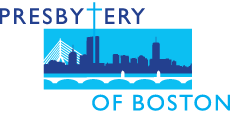
The Presbytery of Boston is the regional governing body for congregations located in the Greater Boston area affiliated with the Presbyterian Church (USA). Established in 1745 and with an office in Clinton, Massachusetts, the Presbytery of Boston currently includes 20 member churches located in Worcester, Norfolk, and Suffolk counties, and parts of Essex County. The Presbytery of Boston is one of 19 presbyteries that comprise the Synod of the Northeast, which oversees churches in New Jersey, New York, and the New England states.















